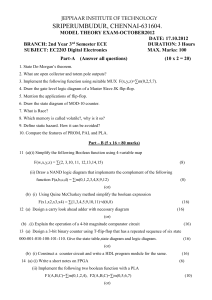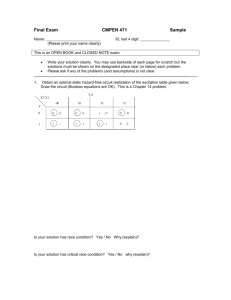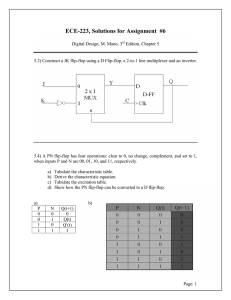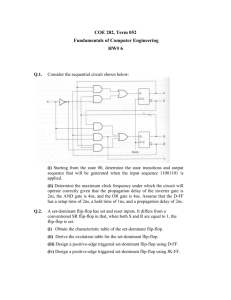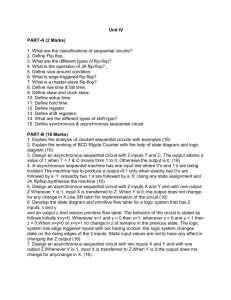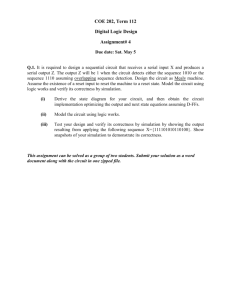ECE 200 Fundamental of Intelligent Systems
advertisement
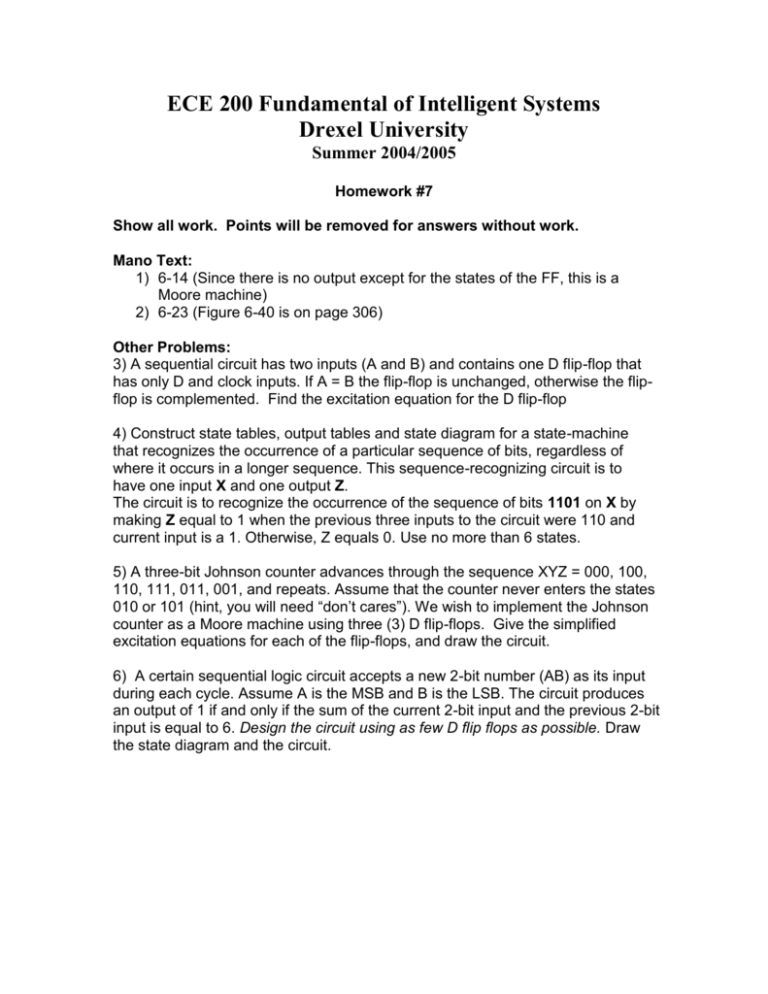
ECE 200 Fundamental of Intelligent Systems Drexel University Summer 2004/2005 Homework #7 Show all work. Points will be removed for answers without work. Mano Text: 1) 6-14 (Since there is no output except for the states of the FF, this is a Moore machine) 2) 6-23 (Figure 6-40 is on page 306) Other Problems: 3) A sequential circuit has two inputs (A and B) and contains one D flip-flop that has only D and clock inputs. If A = B the flip-flop is unchanged, otherwise the flipflop is complemented. Find the excitation equation for the D flip-flop 4) Construct state tables, output tables and state diagram for a state-machine that recognizes the occurrence of a particular sequence of bits, regardless of where it occurs in a longer sequence. This sequence-recognizing circuit is to have one input X and one output Z. The circuit is to recognize the occurrence of the sequence of bits 1101 on X by making Z equal to 1 when the previous three inputs to the circuit were 110 and current input is a 1. Otherwise, Z equals 0. Use no more than 6 states. 5) A three-bit Johnson counter advances through the sequence XYZ = 000, 100, 110, 111, 011, 001, and repeats. Assume that the counter never enters the states 010 or 101 (hint, you will need “don’t cares”). We wish to implement the Johnson counter as a Moore machine using three (3) D flip-flops. Give the simplified excitation equations for each of the flip-flops, and draw the circuit. 6) A certain sequential logic circuit accepts a new 2-bit number (AB) as its input during each cycle. Assume A is the MSB and B is the LSB. The circuit produces an output of 1 if and only if the sum of the current 2-bit input and the previous 2-bit input is equal to 6. Design the circuit using as few D flip flops as possible. Draw the state diagram and the circuit.
